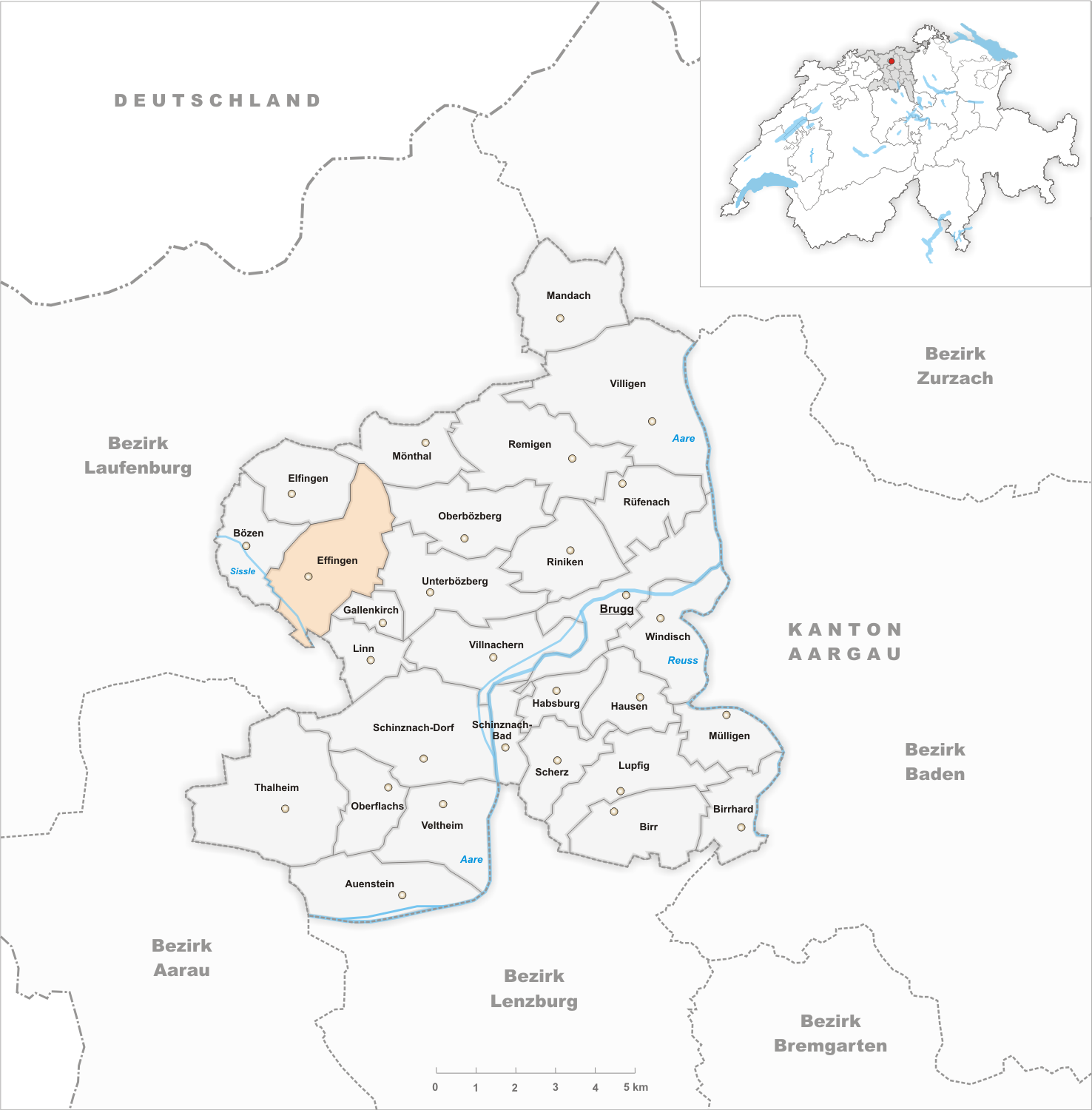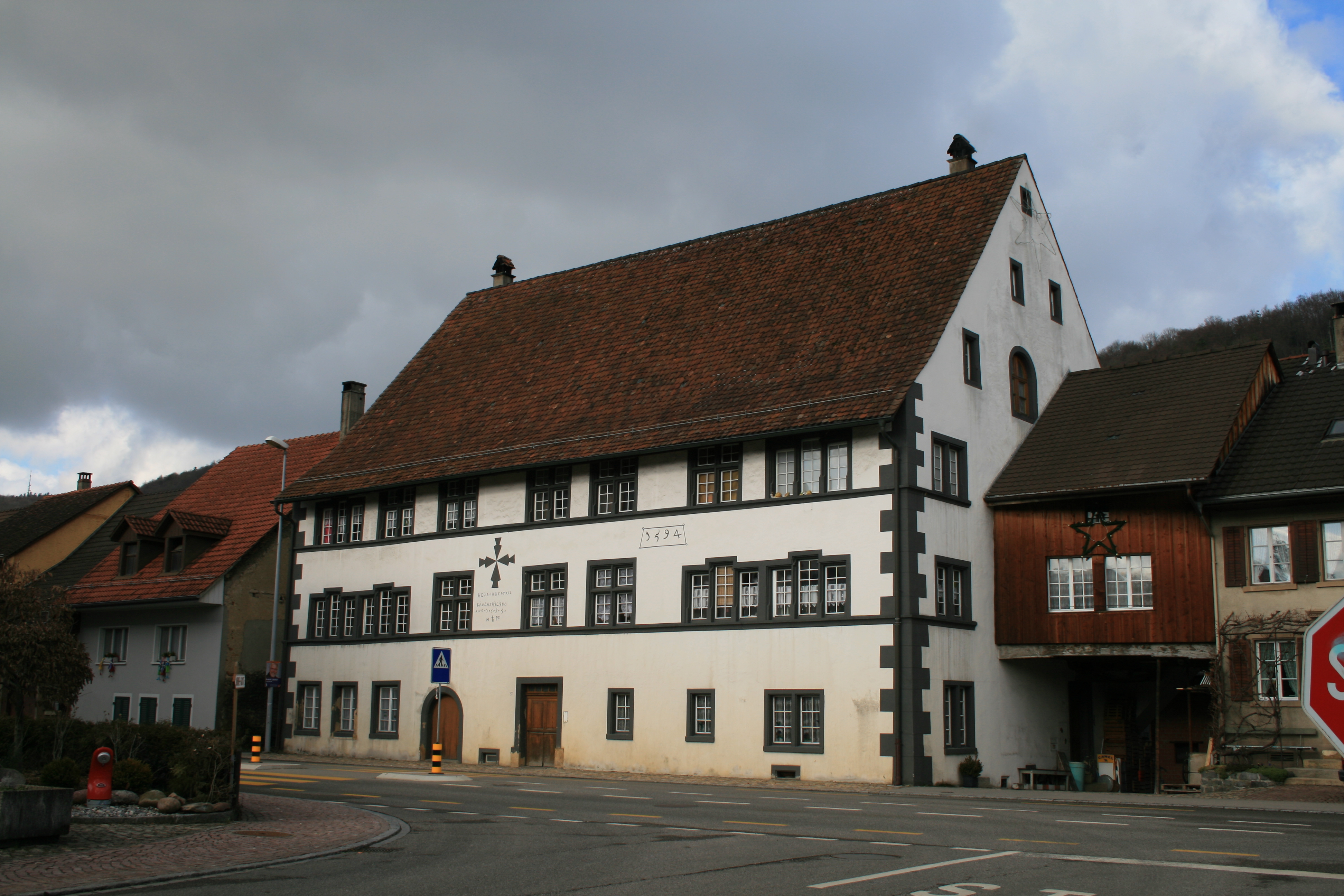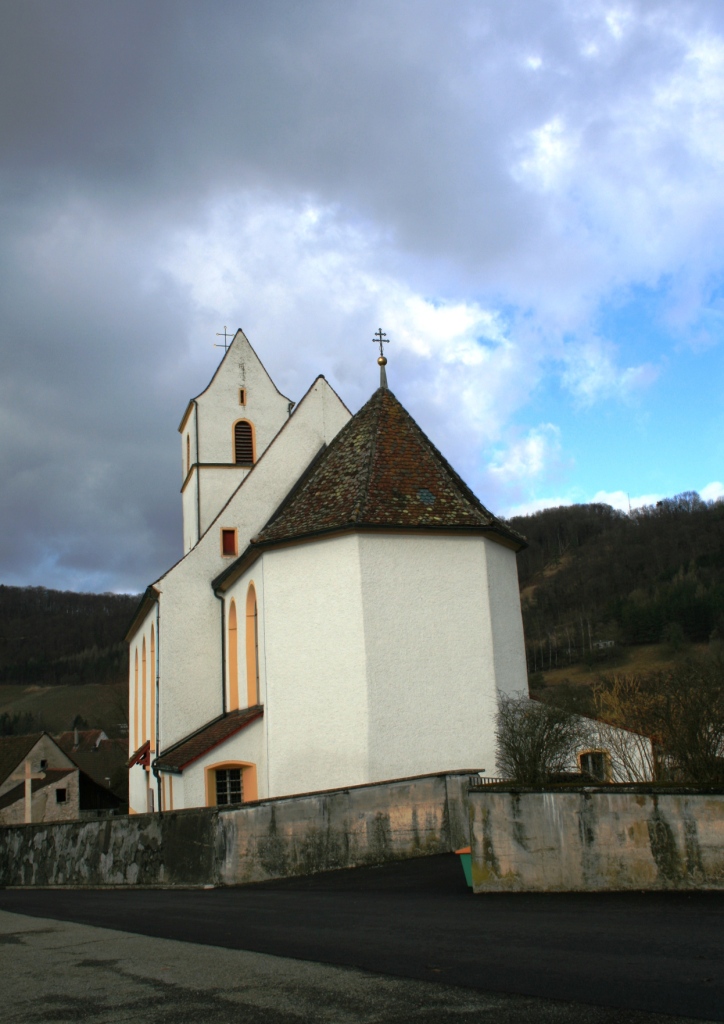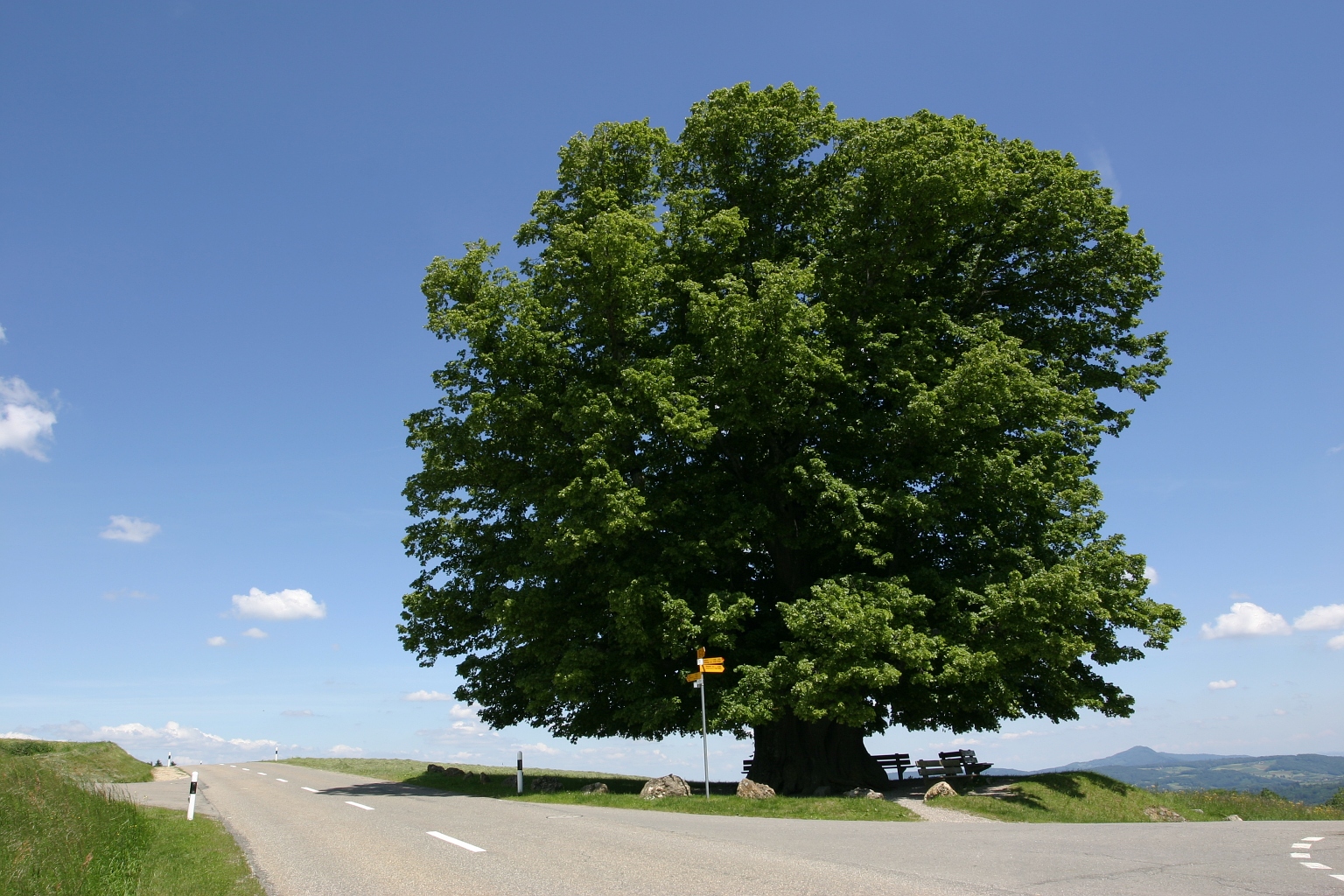|
Elfingen
Elfingen is a former municipality in the district of Brugg in canton of Aargau in Switzerland. On 1 January 2022 the former municipalities of Bözen, Effingen, Elfingen and Hornussen merged into the new municipality of Böztal. History While Alamanni graves have been discovered in the municipality and it was the seat of a fief holder from Murbach Abbey in the 7th Century, Elfingen is first mentioned in 1245 as ''Eolfingen''. When the Abbey sold their holdings in Aargau to the Habsburg in 1291, Elfingen was included. It came under the authority of Bern starting in 1460 and was part of the bailiwick Schenkenberg. The Catholic parish church, was consecrated in 1323 to St. Leodegar. However the parish seat moved in the 16th Century to Bözen. The new parish included Bözen, Effingen, Zeihen (until 1528), Linn (to 1649) and Densbüren (1528–1642). The parsonage remained in Elfingen until 1824, when it moved to Bözen. By 1720 the village had its own school. Until the 19t ... [...More Info...] [...Related Items...] OR: [Wikipedia] [Google] [Baidu] |
Elfingen Dorf2
Elfingen is a former municipalities of Switzerland, municipality in the district of Brugg (district), Brugg in Cantons of Switzerland, canton of Aargau in Switzerland. On 1 January 2022 the former municipalities of Bözen, Effingen, Elfingen and Hornussen, Aargau, Hornussen merged into the new municipality of Böztal. History While Alamanni graves have been discovered in the municipality and it was the seat of a fief holder from Murbach Abbey in the 7th Century, Elfingen is first mentioned in 1245 as ''Eolfingen''. When the Abbey sold their holdings in Aargau to the House of Habsburg, Habsburg in 1291, Elfingen was included. It came under the authority of Bern starting in 1460 and was part of the bailiwick Schenkenberg. The Catholic Church, Catholic parish church, was consecrated in 1323 to St. Leodegar. However the parish seat moved in the 16th Century to Bözen. The new parish included Bözen, Effingen, Zeihen (until 1528), Linn, Aargau, Linn (to 1649) and Densbüren (1528 ... [...More Info...] [...Related Items...] OR: [Wikipedia] [Google] [Baidu] |
Böztal
Böztal is a municipality in the district of Laufenburg in the canton of Aargau in Switzerland. It was established on 1 January 2022 with the merger of the municipalities of Bözen, Effingen, Elfingen and Hornussen. History In November 2009, the municipal assemblies of the five municipalities Bözen, Effingen, Elfingen, Hornussen and Zeihen west of Bözberg Pass had to decide whether to cooperate and include a merger should be examined. While Effingen, Elfingen and Zeihen agreed with large majorities at the time, Bözen and Hornussen rejected the corresponding application. A merger of only the consenting communities was not pursued. In early 2013, an interest group was formed in Bözen, which again sought to merge the municipalities. Zeihen announced in September 2014 that it would not participate in a potential merger. In June 2017, the municipal assemblies of Bözen, Effingen, Elfingen and Hornussen approved the start of official merger clarifications and the formation of ... [...More Info...] [...Related Items...] OR: [Wikipedia] [Google] [Baidu] |
Bözen
Bözen is a former municipality in the district of Brugg in canton of Aargau in Switzerland. On 1 January 2022 the former municipalities of Bözen, Effingen, Elfingen and Hornussen merged into the new municipality of Böztal. History The earliest evidence of people in Bözen are a neolithic stone ax, a Roman Estate and Alamanni graves. Bözen is first mentioned in 1284 as ''Boze''. During the Middle Ages it was owned by Elfingen. Then, in 1291 it was sold, along with most of the Aargau, by Murbach Abbey to the Habsburgs In 1322 it came under the authority of Königsfelden abbey in Windisch. The village was bought by Bern in 1514. Starting in the 16th century, Bözen together with Elfingen and Effingen formed a low justice district. The chapel of Bözen was first mentioned in 1381, and was originally part of the parish of Elfingen. Presumably in 1600 the parish was transferred to Bözen. Economically the village was dominated by agriculture with a number of vineyards (i ... [...More Info...] [...Related Items...] OR: [Wikipedia] [Google] [Baidu] |
Effingen
Effingen is a former municipality in the district of Brugg in canton of Aargau in Switzerland. On 1 January 2022 the former municipalities of Bözen, Effingen, Elfingen and Hornussen merged into the new municipality of Böztal. History Effingen is first mentioned in 1284 as ''Efingen'' though the area was settled earlier. The earliest evidence of a settlement is a High Middle Ages chapel with associated Alamanni graves. Effingen belonged to the court of Elfingen until 1460 when it was purchased by Bern. Under Bern it belonged to the court of Bözen of the Schenkenberg Bailiwick. By 1550 the village administrative rights were limited and in 1614 village officials were first mentioned. Effingen's chapel belonged to the parish of Elfingen and after 1600 to the parish of Bözen. By no later than 1684 there was a village school. Until the 19th century agriculture prevailed with wine being the most important product. In the 18th century home processing of cotton brough ... [...More Info...] [...Related Items...] OR: [Wikipedia] [Google] [Baidu] |
Hornussen, Switzerland
Hornussen is a former municipality in the district of Laufenburg in the canton of Aargau in Switzerland. On 1 January 2022 the former municipalities of Bözen, Effingen, Elfingen and Hornussen merged into the new municipality of Böztal. History Scattered archeological discoveries indicate that the land that would become Hornussen was lightly occupied during the Stone Age. During the Roman era, it was located on the important route over the ''Bözberg''. However, the first mention of Hornussen is in 1281 as ''Hornescon''. Until the 1802 Act of Mediation, all manor rights to the village were held by collegiate church of Säckingen. Until 1797 it was part of the Austrian- Habsburg Rheinfelden District. Since 1803 Hornussen has belong to the Canton of Aargau. Starting in the 15th Century, the Manor of Hornussen had a formal special status within the Habsburg territory. The lord of the manor was the court of appeals for all of Säckingen and also the economic center of t ... [...More Info...] [...Related Items...] OR: [Wikipedia] [Google] [Baidu] |
Hornussen, Aargau
Hornussen is a former municipality in the district of Laufenburg in the canton of Aargau in Switzerland. On 1 January 2022 the former municipalities of Bözen, Effingen, Elfingen and Hornussen merged into the new municipality of Böztal. History Scattered archeological discoveries indicate that the land that would become Hornussen was lightly occupied during the Stone Age. During the Roman era, it was located on the important route over the ''Bözberg''. However, the first mention of Hornussen is in 1281 as ''Hornescon''. Until the 1802 Act of Mediation, all manor rights to the village were held by collegiate church of Säckingen. Until 1797 it was part of the Austrian- Habsburg Rheinfelden District. Since 1803 Hornussen has belong to the Canton of Aargau. Starting in the 15th Century, the Manor of Hornussen had a formal special status within the Habsburg territory. The lord of the manor was the court of appeals for all of Säckingen and also the economic center of ... [...More Info...] [...Related Items...] OR: [Wikipedia] [Google] [Baidu] |
Linn, Aargau
Linn is a former municipality in the district of Brugg in canton of Aargau in Switzerland. On 1 January 2013 the former municipalities of Gallenkirch, Linn, Oberbözberg and Unterbözberg merged to form the new municipality of Bözberg.Amtliches Gemeindeverzeichnis der Schweiz published by the Swiss Federal Statistical Office accessed 2 January 2013 History Linn is first mentioned around 1303-08 as ''ze Linne''. In 1307 it was mentioned as ''ze Lind''. The name is probably connected with the 500- to 800-year-old, legendary Linden tree which is east of Linn. In the |
Brugg (district)
Brugg District is a district in the Canton of Aargau, Switzerland. The capital of the district is the town of Brugg, Switzerland, Brugg. Geography Brugg District has an area, , of . Of this area, 42.6% is used for agricultural purposes, while 41.3% is forested. The rest of the land, (14.1%) is settled. It is located around the rivers Aare and Reuss (river), Reuss. The northern part of the district, north of the Aare, lies in the Aargau part of the Jura mountains. Demographics Brugg District has a population () of 46,471.Statistical Department of Canton Aargau -Bereich 01 -Bevölkerung accessed 20 January 2010 , there were 1,635 homes with 1 or 2 persons in the household, 8,736 homes with 3 or 4 persons in the household, and 6,792 homes with 5 or more persons in the household. The average number of pe ... [...More Info...] [...Related Items...] OR: [Wikipedia] [Google] [Baidu] |
Mönthal
Mönthal is a municipality in the district of Brugg in canton of Aargau in Switzerland. History Originally it was a fortified late Bronze Age hilltop settlement. Additionally, a Roman bronze figure was discovered in the village. During the High Middle Ages there were a number of small settlements in the area. Some of these houses still exist, while others (such as Bernbrunnen, which was mentioned as an independent village about 1300) have vanished. Mönthal is first mentioned about 1273 as ''Muenuntal''. The low and high justice rights were held by the Habsburgs, until 1460 when they went to Bern. Under Bern it was part of the Schenkenberg bailiwick with the court in Stilli. St. George's church was first mentioned in 1273. After 1380 the rights to the church collection and the appointment of the minister was held by Brugg. After 1860 Mönthal was an independent Reformed parish, though in 2007 it merged into the Bözberg parish. Starting in 1630, the village had its ow ... [...More Info...] [...Related Items...] OR: [Wikipedia] [Google] [Baidu] |
Sulz, Aargau
Sulz was a municipality in the district of Laufenburg in the canton of Aargau in Switzerland. The late Roman watchtower in Rheinsulz is listed as a heritage site of national significance.Swiss inventory of cultural property of national and regional significance #REDIRECT Swiss Inventory of Cultural Property of National and Regional Significance {{R from other capitalisation ... (1995), p. 47. On 1 January 2010 the municipality of Sulz merged into Laufenburg. References Cultural property of national significance in Aargau Former municipalities of Aargau Populated places disestablished in 2010 {{Aargau-geo-stub ... [...More Info...] [...Related Items...] OR: [Wikipedia] [Google] [Baidu] |
Zeihen
Zeihen is a municipalities of Switzerland, municipality in the district of Laufenburg (district), Laufenburg in the Cantons of Switzerland, canton of Aargau in Switzerland. Geography Zeihen has an area, , of . Of this area, or 50.9% is used for agricultural purposes, while or 40.7% is forested. Of the rest of the land, or 8.6% is settled (buildings or roads), or 0.1% is either rivers or lakes and or 0.1% is unproductive land.Swiss Federal Statistical Office-Land Use Statistics 2009 data accessed 25 March 2010 Of the built up area, housing and buildings made up 4.7% and transportation infrastructure made up 3.5%. Out of the forested land, 37.5% of the total land area is heavily forested and 3.2% is covered with orchards or small clusters of trees. ... [...More Info...] [...Related Items...] OR: [Wikipedia] [Google] [Baidu] |
DensbĂĽren
DensbĂĽren is a municipality in the Aarau District of the canton of Aargau in Switzerland. History DensbĂĽren is first mentioned in the 14th century as ''Tensbuirron''. In 1426, it was mentioned as ''Teinspuiren''. Geography DensbĂĽren has an area, , of . Of this area, 39.2% is used for agricultural purposes, while 55.7% is forested. Of the rest of the land, 4.8% is settled (buildings or roads) and the remainder (0.2%) is non-productive (rivers or lakes). The municipality is located in the Aarau District on the northern slope of the Staffelegg Pass, a regionally important pass over the Jura Mountains. It consists of the linear village of DensbĂĽren and the hamlets of Asp. Coat of arms The blazon of the municipal coat of arms is ''Argent bordered Gules a Pine Tree Vert issuant from Coupeaux of the same.'' Demographics DensbĂĽren has a population (as of ) of . , 7.7% of the population was made up of foreign nationals. [...More Info...] [...Related Items...] OR: [Wikipedia] [Google] [Baidu] |








